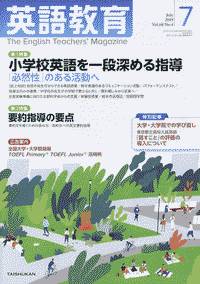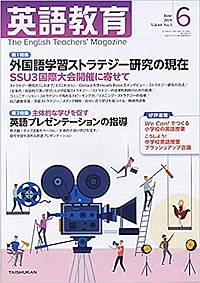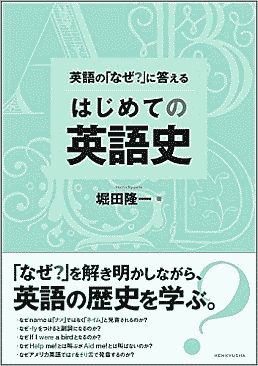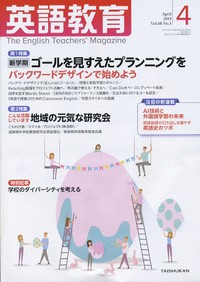2019-09-02 Mon
■ #3780. Foley による「標準英語の発展」の記述 [standardisation][hel_education][demography][me_dialect][black_death][printing][caxton]
私たちが普段学び,用いている標準英語 (Standard English) が,歴史上いかに発展してきたかという話題は,英語史の最重要テーマの1つであり,本ブログでも standardisation の記事を中心に様々に取り上げてきた(とりわけ「#3231. 標準語に軸足をおいた Blake の英語史時代区分」 ([2018-03-02-1]),「#3234. 「言語と人間」研究会 (HLC) の春期セミナーで標準英語の発達について話しました」 ([2018-03-05-1]) を参照).
英語の標準化の歴史は,どの英語史の概説書でも必ず取り上げられる話題だが,人類言語学の概説書を著わした Foley の書いている "The Development of Standard English" という1節が,すこぶるよい文章である.要点を押さえながら,教科書的な標準英語の発展を非常に上手にまとめている.3ページ弱にわたるので,引用するのにも決して短くはないが,授業の講読の題材としても使えそうなので,PDFでこちらに用意しておく.
この記述がすぐれている点の1つは,標準英語のベースとなるロンドン英語が諸方言の混合物であることについて,歴史的経緯を分かりやすく説明してくれていることだ.もともと南部方言的な要素を多分に含んでいたロンドンの英語が,14--15世紀のあいだに,経済的に繁栄していた中東部からの人口流入を受けて中部方言的な要素を獲得した.ここには,14世紀後半からの黒死病に起因する人口流動性の高まりも相俟っていたろう.さらに,15世紀中には,羊毛製品で経済的に潤った北部方言の話者も,多くロンドンの上流層へ流れ込み,結果として,諸方言の混合としてのロンドン英語が成立した.そして,これが後の標準英語の母体となっていったのである.
もう1つ注目すべきは,英語史に限定されない一般的な立場から,言語の標準化の3つの条件を提示して議論を締めくくっている点である.1つは,経済的・政治的に有力な地域の言語・方言が標準語の土台となるということ.もう1つは,その言語・方言がエリート集団のものであること.最後に,文学伝統をもった言語・方言が標準語の土台となりやすいことだ.この下りだけでも,以下に直接引用しておきたい.
To summarize, the rise of Standard English . . . exhibits a number of important general points about the how and whys of language standardization: first, if economic and political power is centralized in a particular area, the language of that area has a strong likelihood of being the basis of the standard, as the center imposes its hold upon the periphery (Standard French based on the Parisian dialect is another example of this); second, the standard is likely to be based on the speech of economically and politically powerful social groups, the elite, as their speech becomes imposed upon or diffused to lower status groups; ability to speak this dialect now becomes emblematic of higher social standing and thus a desirable skill, a kind of symbolic resource further empowering the elite, who may control access to the dialect through the education system, as is clearly the case in most modern nation-states; and third, a language or dialect which is the basis of literate forms and other cultural activities is a strong candidate for an imposed standard (Standard Italian based on the Tuscany dialect of Dante exemplifies this). (Foley 403)
・ Foley, William A. Anthropological Linguistics: An Introduction. Malden, MA: Blackwell, 1997.
2019-08-27 Tue
■ #3774. 広島慶友会での講演「英語史から見る現代英語」のお知らせ [notice][keiyukai][hel_education][sobokunagimon][dialect]
今週末8月31日(土)の14時?17時,および翌日9月1日(日)の10時?12時に,広島慶友会にて「英語史から見る現代英語」と題する2回の講演を行ないます.場所は,広島YMCA国際文化センター3号館3階です.公式の案内はこちらです.
大雑把な演題ではありますが,初日の土曜日は,英語に関する様々な素朴な疑問を具体的に取り上げ,英語史の観点から解決していくという趣旨で話しを進める予定です.講演の後半には,参加している皆さんからの疑問を受け付け,一緒に議論していくということも考えています.関連して,同趣旨の本ブログ記事「#3677. 英語に関する「素朴な疑問」を集めてみました」 ([2019-05-22-1]),あるいは sobokunagimon の各記事もご覧ください.
2日目の日曜日のセッションは,英語の方言について考えます.そもそも方言とは何か,言語と方言とはどう異なるのかという話しから始め,日本語の諸方言を参照しつつ,イングランドで話されている現代英語の地域方言をのぞいてみます.言語・方言の死,方言差別,世界の様々な英語,世界語としての英語のもつ求心力と遠心力などの話題に触れながら,英語の枠内にとどまらず,広く言語・方言の多様性について考えていきたいと思います.この議論を通じて,私たちが日々学び,用いている標準英語が,現代世界においてどのような立ち位置にあるか,よく分かるようになると思います.今後の英語との付き合い方を考える上で参考になるはずです.こちらの話題に関しては,dialect や world_englishes などの記事を参照ください.
2019-06-17 Mon
■ #3703.『英語教育』の連載第4回「なぜ比較級の作り方に -er と more の2種類があるのか」 [notice][hel_education][elt][sobokunagimon][adjective][adverb][comparison][rensai][latin][french][synthesis_to_analysis][link]
6月14日に,『英語教育』(大修館書店)の7月号が発売されました.英語史連載記事「英語指導の引き出しを増やす 英語史のツボ」の第4回目として拙論「なぜ比較級の作り方に -er と more の2種類があるのか」が掲載されています.是非ご覧ください.

形容詞・副詞の比較表現については,本ブログでも (comparison) の各記事で扱ってきました.以下に,今回の連載記事にとりわけ関連の深いブログ記事のリンクを張っておきますので,あわせて読んでいただければ,-er と more に関する棲み分けの謎について理解が深まると思います.
・ 「#3617. -er/-est か more/most か? --- 比較級・最上級の作り方」 ([2019-03-23-1])
・ 「#3032. 屈折比較と句比較の競合の略史」 ([2017-08-15-1])
・ 「#456. 比較の -er, -est は屈折か否か」 ([2010-07-27-1])
・ 「#2346. more, most を用いた句比較の発達」 ([2015-09-29-1])
・ 「#403. 流れに逆らっている比較級形成の歴史」 ([2010-06-04-1])
・ 「#2347. 句比較の発達におけるフランス語,ラテン語の影響について」 ([2015-09-30-1])
・ 「#3349. 後期近代英語期における形容詞比較の屈折形 vs 迂言形の決定要因」 ([2018-06-28-1])
・ 「#3619. Lowth がダメ出しした2重比較級と過剰最上級」 ([2019-03-25-1])
・ 「#3618. Johnson による比較級・最上級の作り方の規則」 ([2019-03-24-1])
・ 「#3615. 初期近代英語の2重比較級・最上級は大言壮語にすぎない?」 ([2019-03-21-1])
・ 堀田 隆一 「英語指導の引き出しを増やす 英語史のツボ 第4回 なぜ比較級の作り方に -er と more の2種類があるのか」『英語教育』2019年7月号,大修館書店,2019年6月14日.62--63頁.
2019-06-09 Sun
■ #3695. 日本における英語関係史の略年表 [timeline][hel_education][english_in_japan]
小学館の『英語便利辞典』に,日本における英語受容史の主要な事項を年代順に列挙した略年表がある (460--61) .1600年から第2次世界大戦直後までの3世紀半に渡る日本と英語との接触の足跡を辿ろう.
| 年号 | 事項 | 解説 |
|---|---|---|
| 1600(慶長5)年 | ウィリアム・アダムズ(William Adams;三浦按針)豊後海岸に漂着. | ウィリアム・アダムズは日本に最初に来た英国人とされる.家康に重用された. |
| 1808(文化5)年 | フェートン号事件 (Phaeton Incident) . | イギリスの軍艦フェートン号が長崎港に乱入.この事件をきっかけに,蘭学から英学へ移行. |
| 1814(文化11)年 | 『暗厄利亜語林大成(あんげりあごりんたいせい)』出版. | 蘭英字書をもとに編まれた日本最初の英和辞書. |
| 1841(天保12)年 | 中浜万次郎(通称:ジョン万),米捕鯨船に保護される. | 中浜万次郎は出漁中に太平洋上の孤島で遭難.その後米捕鯨船に救助され,アメリカで教育を受け,1851年帰国. |
| 1855(安政2)年 | 洋学所設立,翌年蕃書調所となる. | 洋学所は幕府の設置する洋学研究所. |
| 1858(安政5)年 | 日米修好通商条約締結. | 日本が外国と結んだ最初の条約. |
| 1859(安政6)年 | ヘボン博士来日. | ヘボン (James Curtis Hepburn) 博士はヘボン式ローマ字で有名.辞書編纂,聖書の日本語訳その他日本文化に多大の寄与をした. |
| 1860(万延1)年 | 咸臨丸アメリカに向け出航. | 日本の軍艦咸臨丸は,日米修好通商条約批准のための遣米使節団を乗せたポウハタン号に随行したが,同船には福沢諭吉,勝海舟なども乗船していた. |
| 1862(文久2)年 | 『英和對譯袖珍(しゅうちん)辞書』出版. | 堀達乃助他編.日本最初の本格的英和辞書. |
| 1866(慶応2)年 | 『西洋事情』ベストセラーとなる. | 福沢諭吉が著し,明治開化期の文明に大きな影響を与えた. |
| 1867(慶応3)年 | 『和英語林集成』出版. | ヘボンによる最初の和英辞典.その後改訂増補された. |
| 1871(明治4)年 | 津田梅子渡米. | 津田梅子は日本初の女子留学生.1900年女子英学塾(現在の津田塾大の前身)を創設. |
| 1876(明治9)年 | クラーク博士,札幌農学校に赴任. | クラーク (William Smith Clark) 博士は札幌農学校(現北海道大学)初代教頭を務める.諸説あるが,Boys, be ambitious! で有名.同校は新渡戸稲造(にとべいなぞう),内村鑑三など優秀な人材を輩出する. |
| 1890(明治23)年 | ラフカディオ・ハーン来日. | ラフカディオ・ハーン (Patrick Lafcadio Hearn;日本名:小泉八雲)は作家,英文学者.松江中学,東京帝国大学などで教鞭をとる.主著『怪談』『心』など. |
| 1914(大正4)年 | 『熟語本意英和中辞典』出版. | 斎藤秀三郎著.独創的な内容は,その後の英和辞書に大きな影響を与える. |
| 1918(大正7)年 | 『武信和英大辞典』出版. | 日本初の本格的和英辞典で,現行の研究社『新和英大辞典』の前身.武信(たけのぶ)由太郎編. |
| 1922(大正11)年 | パーマー (Harold E. Palmer) 来日. | オーラル・メソッド(Oral Method;口頭教授法)を唱え,以後の英語教育に大きな影響を与えた. |
| 1927(昭和2)年 | 研究社『新英和大辞典』出版. | 日本初の本格的英和大辞典.現在は第6版が出されているが,初版の著者は岡倉由三郎. |
| 1945(昭和20)年 | 『日米会話手帳』ベストセラーとなる. | 戦後2か月を経ない出版で,360万部の爆発的売れ行きを示した. |
| 1946(昭和21)年 | 平川唯一,英語会話放送開始. | 平川唯一はNHK放送のいわゆる「カムカム英語」の担当者.第二次世界大戦後の英語ブームの元祖となる. |
・ 小学館外国語辞典編集部(編) 『英語便利辞典』 小学館,2006年.
2019-06-08 Sat
■ #3694. 朝尾 幸次郎(著)『英語の歴史から考える英文法の「なぜ」』 [sobokunagimon][review][toc][hel_education]
今年3月に出版された朝尾 幸次郎(著)『英語の歴史から考える英文法の「なぜ」』が広く読まれているようだ.拙著の『英語史で解きほぐす英語の誤解 --- 納得して英語を学ぶために』(中央大学出版部,2011年)や『英語の「なぜ?」に答えるはじめての英語史』(研究社,2016年)と同趣旨の本ということもあり関心をもって手に取ってみたが,実に読みやすく,分かりやすい.
内容をどこまで掘り下げているかという観点からいえば,この新刊書は浅掘りである.しかし,「まえがき」 (iv) にあるように,著者は英語史の事前知識を想定しないという立場をとっており,その趣旨からすると,むしろ詳しすぎない程度に記述を抑えているセンスは素晴らしいと言ってよいだろう.本書が手に取ってもらいやすい理由である.
著者が実例を挙げることを重視したと述べているとおり,本文にも〈英文法こぼれ話〉にも,読者の興味を引く例が掲載されている.ところどころに,見事なキャッチフレーズやセンスの光る解説がみられる.「英語は歴史的かなづかい」のような言い方もその1つだ.
以下に目次を付そう.章節のタイトルがそのまま素朴な疑問になっているものが多い.本ブログでも扱ってきた話題が多く取り上げられているので,ブログ内をキーワード検索などして記事も眺めていただければと思うが,同じ問題でも,人が変われば眺め方も変わるものである.本書の解説を読んでみて,私自身の手持ちの解説とは異なり,ナルホドと思ったケースも多々あった.是非ご一読を.
1 英語の始まり
1.1 ブリテン島の攻防
1.2 現代英語
1.3 近代英語
1.4 中英語
1.5 古英語
〈英文法こぼれ話〉 日比谷公園のルーン文字
2 「てにをは」はどこにある
2.1 「は」はどこにある
2.2 屈折の話
2.3 英語は聞き取りにくい
〈英文法こぼれ話〉 アポストロフィー大論争
3 代名詞にだけ主格・目的格があるのはなぜ
3.1 古い姿を残す1人称代名詞
3.2 単数にも複数にも you を使うのはなぜ
3.3 文法性を捨てた3人称代名詞
3.4 同じ起源だった who, what, why
3.5 主格と目的格のせめぎあい
〈英文法こぼれ話〉 who と whom,どちらを使う
4 屈折はなぜ消えた
4.1 英語消滅の危機
4.2 消えた屈折
4.3 代名詞の they はどこから来た
〈英文法こぼれ話〉 ポアロはことばの名探偵
5 格はどこへ行った
5.1 主語・目的語は何でわかる
5.2 なぜ It's me. と言うのか
5.3 なぜ There is/are と言うのか
5.3 なぜ go home と言うのか
6 〈3単現〉だけでない動詞の謎
6.1 不規則動詞は例外か
6.2 〈3単現〉に -(e)s をつけるのはなぜ
6.3 be 動詞が無秩序なのはなぜ
〈英文法こぼれ話〉 『トム・ソーヤーの冒険』に現れる古英語の〈3単現〉
7 未来形はどこにある
7.1 「未来形」の謎
7.2 will が未来を表すのはなぜ
7.3 shall が未来を表すのはなぜ
8 仮定法は仮定を表すのか
8.1 なじみの薄い「法」
8.2 ものの見方・とらえ方
8.3 従節に現れる仮定法現在
8.4 影の薄い仮定法
8.5 過去形で現在を表すのはなぜ
8.6 命令文に動詞の原形を使うのはなぜ
8 仮定法は仮定を表すのか
9.1 can に〈3単現〉の -s をつけないのはなぜ
9.2 仮定法の意味を担うようになった may
9.3 なぜ must には過去形がないのか
9.4 could, might の将来
10 覚えきれない単語の謎
10.1 英語史上最大の危機
10.2 こんなに語彙が多いのはなぜ
10.3 不思議な綴り字の謎
〈英文法こぼれ話〉 U・V・W の謎
11 前置詞 of の意味はなぜ混乱している
11.1 「の」では理解できない
11.2 前置詞 of が所有格の意味を表すのはなぜ
11.3 所有格と of のどちらを使う
12 英語は歴史的かなづかい
12.1 母音を目で見る
12.2 姿を変えた英語の母音
12.3 規則的に不規則な英語の綴り字
〈英文法こぼれ話〉 ghoti の謎
13 A の謎:可算・不可算はどうして決まる
13.1 数詞から生まれた不定冠詞
13.2 可算・不可算はだれが決めた
13.3 形あるもの・ないもの
13.4 なぜ a few と言うのか
〈英文法こぼれ話〉 歴史に残った不定冠詞のつけ忘れ
14 定冠詞の謎:the はつけるの,つけないの
14.1 指示代名詞から生まれた定冠詞
14.2 認識の共有
14.3 輪郭をつくる
14.4 とりたて
〈英文法こぼれ話〉 ハックルベリー・フィンとトム・ソーヤー
15 関係代名詞に that と wh- があるのはなぜ
15.1 that を接続詞に使うのはなぜ
15.2 that, who, which, what を関係代名詞に使うのはなぜ
15.3 関係代名詞は省略されたのか
〈英文法こぼれ話〉 二重否定は肯定か
16 that で程度・結果を表すのはなぜ
16.1 なぜ so/such ... that と言うのか
16.2 なぜ so that ... で結果・目的を表すのか
16.3 なぜ that が「そんなに」と言う意味になるのか
17 不定詞に to がつくのはなぜ
17.1 なぜ「不定詞」と言うのか
17.2 不定詞に to がつくのはなぜ
17.3 疑問文・否定文に do/does/did が現れるのはなぜ
〈英文法こぼれ話〉 明治時代の助動詞 do
18 不定詞は何を表す:to 不定詞と原形不定詞
18.1 to 不定詞の意味はどこから生まれる
18.2 動名詞と to 不定詞,何が違う
18.3 知覚動詞と使役動詞:原形不定詞を使うのはなぜ
19 現在完了形に have を使うのはなぜ
19.1 現在完了はなぜ〈have+過去分詞〉なのか
19.2 完了・結果・経験・継続の意味になるのはなぜ
19.3 なぜ have to という言い方をするのか
20 進行形は進行を表すのか
20.1 進行形はなぜ〈be+...ing〉なのか
20.2 クローズアップで見せる進行形
20.3 なぜ be going to という言い方をするのか
あとがきに替えて――『オックスフォード英語辞典』を使う
・ 朝尾 幸次郎 『英語の歴史から考える英文法の「なぜ」』 大修館,2019年.
[ 固定リンク | 印刷用ページ ]
2019-05-21 Tue
■ #3676. 英語コーパスの使い方 [corpus][hel_education][link][methodology]
たいそうな題名の記事ですが,これまでにコーパス利用について書いてきたブログ記事その他へのリンク集にすぎません.
まず英語学でコーパスを利用しようと思ったら,様々な参考図書があるものの,まずは研究社のウェブサイトより「リレー連載 実践で学ぶ コーパス活用術」の連載記事(全37本)に目を通すのがよいと思います.筆者の堀田も影は薄いですが寄稿しています (cf. 「#2186. 研究社Webマガジンの記事「コーパスで探る英語の英米差 ―― 基礎編 ――」」 ([2015-04-22-1]) と「#2216. 研究社Webマガジンの記事「コーパスで探る英語の英米差 ―― 実践編」 ([2015-05-22-1])).
本ブログからは corpus の各記事をご覧いただきたいのですが,その中から特に重要な記事を選んでおきます.
・ 「#568. コーパスの定義と英語コーパス入門」 ([2010-11-16-1])
・ 「#307. コーパス利用の注意点」 ([2010-02-28-1])
・ 「#367. コーパス利用の注意点 (2)」 ([2010-04-29-1])
・ 「#2779. コーパスは英語史研究に使えるけれども」 ([2016-12-05-1])
・ 「#363. 英語コーパス発展の3軸」 ([2010-04-25-1])
・ 「#368. コーパスは研究の可能性を広げた」 ([2010-04-30-1])
・ 「#1165. 英国でコーパス研究が盛んになった背景」 ([2012-07-05-1])
・ 「#1280. コーパスの代表性」 ([2012-10-28-1])
・ 「#2584. 歴史英語コーパスの代表性」 ([2016-05-24-1])
・ 「#428. The Brown family of corpora の利用上の注意」 ([2010-06-29-1])
・ 「#517. ICE 提供の7種類の地域変種コーパス」 ([2010-09-26-1])
・ 「#271. 語彙研究ツールとしての辞書とコーパス」 ([2010-01-23-1])
歴史英語コーパスのハブというべきサイトといえば,「#506. CoRD --- 英語歴史コーパスの情報センター」 ([2010-09-15-1]) を挙げないわけにはいきません.現時点で最も有用な歴史英語の情報集積サイトです.
BNC, COCA, ICE, Brown Family, COHA, HC (= Helsinki Corpus), LAEME, EEBO, CLMET など個別の(歴史)コーパスについては,それぞれのタグをつけた bnc, coca, ice, brown, coha, hc, laeme, eebo, clmet もご参照ください.
その他,リンク集としては「コーパスで探る英語の英米差 ―― 基礎編 ――」」 ([2015-04-22-1]) の記事も参照.
2019-05-15 Wed
■ #3670.『英語教育』の連載第3回「なぜ不規則な動詞活用があるのか」 [notice][hel_education][elt][sobokunagimon][verb][conjugation][tense][preterite][participle][rensai][link]
『英語教育』の6月号が発売されました.英語史連載記事「英語指導の引き出しを増やす 英語史のツボ」の第3回目となる「なぜ不規則な動詞活用があるのか」が掲載されています.是非ご一読ください.

日常的な単語ほど不規則な振る舞いを示すというのは,言語にみられる普遍的な性質です.これは英語の動詞の過去・過去分詞形についてもいえます.大多数の動詞は規則的な語尾 -ed を付して過去・過去分詞形を作りますが,日常的な少数の動詞は,buy -- bought -- bought, cut -- cut -- cut, go -- went -- gone, sing -- sang -- sung, write -- wrote -- written などのように個別に暗記しなければならない不規則な変化を示します.今回の連載記事では,これら不規則な動詞活用の歴史をたどります.そして,「不規則」動詞の多くは歴史的には「規則」動詞であり,その逆もまた真なり,という驚くべき真実が明らかになります.
動詞の不規則変化については,本ブログでも関連記事を書きためてきましたので,以下をご参照ください.
・ 「#3339. 現代英語の基本的な不規則動詞一覧」 ([2018-06-18-1])
・ 「#178. 動詞の規則活用化の略歴」 ([2009-10-22-1])
・ 「#527. 不規則変化動詞の規則化の速度は頻度指標の2乗に反比例する?」 ([2010-10-06-1])
・ 「#528. 次に規則化する動詞は wed !?」 ([2010-10-07-1])
・ 「#1287. 動詞の強弱移行と頻度」 ([2012-11-04-1])
・ 「#3135. -ed の起源」 ([2017-11-26-1])
・ 「#3345. 弱変化動詞の導入は類型論上の革命である」 ([2018-06-24-1])
・ 「#3385. 中英語に弱強移行した動詞」 ([2018-08-03-1])
・ 「#492. 近代英語期の強変化動詞過去形の揺れ」 ([2010-09-01-1])
・ 「#1854. 無変化活用の動詞 set -- set -- set, etc.」 ([2014-05-25-1])
・ 「#1858. 無変化活用の動詞 set -- set -- set, etc. (2)」 ([2014-05-29-1])
・ 「#2200. なぜ *haves, *haved ではなく has, had なのか」 ([2015-05-06-1])
・ 「#1345. read -- read -- read の活用」 ([2013-01-01-1])
・ 「#2084. drink--drank--drunk と win--won--won」 ([2015-01-10-1])
・ 「#2210. think -- thought -- thought の活用」 ([2015-05-16-1])
・ 「#2225. hear -- heard -- heard」 ([2015-05-31-1])
・ 「#3490. dreamt から dreamed へ」 ([2018-11-16-1])
・ 「#439. come -- came -- come なのに welcome -- welcomed -- welcomed なのはなぜか」 ([2010-07-10-1])
・ 「#43. なぜ go の過去形が went になるか」 ([2009-06-10-1])
・ 「#1482. なぜ go の過去形が went になるか (2)」 ([2013-05-18-1])
・ 「#764. 現代英語動詞活用の3つの分類法」 ([2011-05-31-1])
連載のバックナンバーとして,第1回記事「なぜ3単現に -s をつけるのか」と第2回記事「なぜ不規則な複数形があるのか」の案内もご覧ください.
・ 堀田 隆一 「英語指導の引き出しを増やす 英語史のツボ 第3回 なぜ不規則な動詞活用があるのか」『英語教育』2019年6月号,大修館書店,2019年5月13日.62--63頁.
2019-05-14 Tue
■ #3669. ゼミのグループ研究のための取っ掛かり書誌 [hel_education][bibliography][seminar][agentive_suffix]
大学の英語史ゼミでは,今期も数名でミニ調査を行なう「グループ研究」を開始しています.5つのグループ研究テーマを設けていますが,各研究の取っ掛かりとして,いくつかの参考資料や文献を提示します.今後も随時ここに書誌を加えていこうかと思っていますので,ゼミ学生はたまに覗いてください.ミニ書誌ではありますが,せっかくなのでブログ上でオープンにしておきます.強調しておきますが,あくまで「取っ掛かり」のための書誌です.ここから研究を育てていってください.
0. 全般
- 英語史(英語学)の基本文献リスト (PDF)
- 各種オンラインコーパス (e.g. BNCweb, COCA, COHA, EEBO, ICE)
- コーパスの利用について,特に ##1278,506,307,367 を参照
- 各種辞書 (e.g. OED, MED, HTOED)
1. be 完了の歴史
- hellog より "perfect be" のタグのついた記事すべて
- Rissanen, Matti. "Syntax." The Cambridge History of the English Language. Vol. 3. Cambridge: CUP, 1999. 187--331. 215ff.
- Sorace, A. "Gradients in Auxiliary Selection with Intransitive Verbs." Language 76 (2000): 859--90.
- Visser, F. Th. An Historical Syntax of the English Language. 3 vols. Leiden: Brill, 1963--1973. 2043ff.
- 荒木 一雄,宇賀治 正朋 『英語史IIIA』 英語学大系第10巻,大修館書店,1984年.423頁他.
- 中尾 俊夫・児馬 修(編著) 『歴史的にさぐる現代の英文法』 大修館,1990年.
- 保坂 道雄 『文法化する英語』 開拓社,2014年.
2. 行為者接尾辞の歴史
- hellog より "suffix agent" のタグのついた記事すべて
- Barker, Chris. "Episodic -ee in English: A Thematic Role Constraint on New Word Formation." Language 74 (1998): 695--727.
- Bolinger. "Visual Morphemes." Language 22 (1946): 333--40.
- Carney, Edward. A Survey of English Spelling. Abingdon: Routledge, 1994.
- Huddleston, Rodney and Geoffrey K. Pullum. The Cambridge Grammar of the English Language. Cambridge: CUP, 2002.
- Isozaki, Satoko. "520 -ee Words in English." Lexicon 36 (2006): 3--23.
- Marchand, Hans. The Categories and Types of Present-Day English Word-Formation: A Synchronic-Diachronic Approach. 2nd. ed. München: Beck, 1969.
- McDavid, Raven I., Jr. "Adviser and Advisor: Orthography and Semantic Differentiation." Studies in Linguistics 1 (1942).
- Upward, Christopher and George Davidson. The History of English Spelling. Malden, MA: Wiley-Blackwell, 2011.
- 大石 強 『形態論』 開拓社,1988年.
- 太田 聡 「「?する人[もの]」を表す接尾辞 -or について」『近代英語研究』 第25号,2009年,127--33頁.
- 西川 盛雄 『英語接辞研究』 開拓者,2006年.
3. 強意語のサイクル
- hellog より "intensifier" のタグのついた記事すべて
- Peters, Hans. "Degree Adverbs in Early Modern English." Studies in Early Modern English. Ed. Dieter Kastovsky. Mouton de Gruyter, 1994. 269--88.
- Room, Adrian, ed. NTC's Dictionary of Changes in Meanings. Lincolnwood: NTC, 1991.
- Stern, Gustaf. Meaning and Change of Meaning. Bloomington: Indiana UP, 1931.
- Ullmann, Stephen. The Principles of Semantics. 2nd ed. Glasgow: Jackson, 1957.
- Waldron, R. A. Sense and Sense Development. New York: OUP, 1967.
- Williams, Joseph M. Origins of the English Language: A Social and Linguistic History. New York: Free P, 1975. 191ff.
4. 聖書の英語の通時的比較
- hellog より "bible" のタグのついた記事すべて
- 特に「#1848. 英訳聖書のウェブ・リソース」
- 特に「#2953. 「創世記」11:1--9 (「バベルの塔」)を近現代8ヴァージョンで読み比べ」
- Crystal, David. BEGAT: The King James Bible and the English Language. Oxford: Oxford UP, 2010.
- Nevalainen, T. "Change from Above. A Morphosyntactic Comparison of Two Early Modern English Editions of The Book of Common Prayer." A Reader in Early Modern English. Ed. M. Rydé, I. Tieken-Boon van Ostade, and M. Kytó. Frankfurt: Lang, 165--86.
- 寺澤 盾 『聖書でたどる英語の歴史』 大修館書店,2013年.
- 橋本 功 『英語史入門』 慶應義塾大学出版会,2005年. 205頁他.
5. 英語帝国主義批判
- hellog より "linguistic_imperialism" のタグのついた記事すべて
- Graddol, David. The Future of English? The British Council, 1997. Digital version available at https://www.teachingenglish.org.uk/article/future-english.
- Crystal, David. English As a Global Language. 2nd ed. Cambridge: CUP, 2003.
- Graddol, David. English Next. British Council, 2006. Digital version available at https://www.teachingenglish.org.uk/article/english-next.
- Phillipson, Robert. Linguistic Imperialism. Oxford: OUP, 1992.
- 施 光恒 『英語化は愚民化 日本の国力が地に落ちる』 集英社〈集英社新書〉,2015年.
- 津田 幸男 『英語支配とことばの平等』 慶應義塾大学出版会,2006年.
- 中村 敬 『英語はどんな言語か 英語の社会的特性』 三省堂,1989年.
- 中村 敬 『なぜ,「英語」が問題なのか? 英語の政治・社会論』 三元社,2004年.
- 水村美苗 『日本語が亡びるとき』 筑摩書房,2008年.
2019-04-26 Fri
■ #3651. 5月14日(火)より,東京言語研究所の理論言語学講座(前期)「史的言語学」が開講されます [notice][hel_education]
本年度前期,東京言語研究所の理論言語学講座の「史的言語学」部門は,本ブログの執筆者,堀田隆一が担当することになっています.講座概要 (PDF) で「英語史の概説を通じて,歴史的・通時的な言語の見方を身につける」と銘打っている通り,英語史と歴史言語学の入門講座です.概要に書いた文章を繰り返しますと,
英語という言語の特徴を理解するためには,それがたどってきた歴史を学ぶことが不可欠です.英語の起源はどこにあるのか,英語に見られる不規則性は何に由来するのか,英語は将来どうなってゆくのか,などの現代的な問題に歴史的・通時的な視点からアプローチすることで,多面的な英語観,言語観を形成することが本講義の目標です.
ということになります.
5月14日(火)から毎週火曜日19:00?20:40の枠で10回の講義を予定していますので,関心のある方は東京言語研究所の HP よりお申込みください.申込みの締切は5月9日(木)となっています.また,第1週の始まる直前の5月12日(日)の13:00より,開講式および前期の面接ガイダンスが予定されています.
なお,先週末の4月21日(土)には同研究所で,単発の春期講座「英語史の視点から英語を眺める」を開かせていただきました(cf. 「#3633. 4月21日(日),東京言語研究所の春期講座で「英語史の視点から英語を眺める」を話します」 ([2019-04-08-1])).レギュラー講座でもよろしくお願いいたします.
2019-04-25 Thu
■ #3650. hellog 10周年になります [notice][hel_education]
本ブログは,今回をもって3650番目を数えることになりました.毎日1つの記事ということで続けてきましたので,(閏年の計算云々は別にして)ほぼ10年間続けてきたことになります.続けてこられたのは,ひとえに英語史に関心を寄せる読者のみなさんのおかげです.ありがとうございます.
10年前にブログを始めたのは,私の「英語史」の講義を受講していた大学生に,講義の補足情報を提供するためだったのですが,その後受講学生以外にも読者が少しずつ広がっていき,今では英語学習者,英語教師,そして英語学などを専攻する大学院生や研究者の方にも閲覧してもらっているようです.
毎日の執筆ですし,おのずから校正も甘くなってしまうので内容や形式について不十分なところがありますが,引用や参照においては典拠を明示するなど,みなさんが各々の話題について確認したり,さらに調べたりできるようには心がけてきました.
実はブログ執筆を通じていちばん恩恵を被っているのは執筆者自身であるということは,恐らく誰も信じないことかと思います(そうでないと続くわけがないのです)が,これは本当です.本ブログに基づいて英語史の書籍も複数出版しましたし,学術論文も出してきました.これらのいろいろなポジティヴな効用は,開始当時はまったく想定外でした.また,自分で書いたことを忘れてしまっている記事も多いので,ブログをセルフ検索して改めて学ぶ頻度でいえば,多分誰にも負けていないのではないかと思います(一日に何度キーワードを検索しているだろうか・・・).
いずれにせよ,これからも続けていくつもりです.ここ数日は年度初めということもあり,学生から寄せられた「素朴な疑問」をなるべく多く取り上げることにしています.実際には,多くが「素朴」な疑問などではなく,かなり高度だったりしますが,それでも英語学習の際に,あるいは英語教育の現場で,何気なく,ふと生じる疑問,これまであえて問うてこなかった疑問を,親しみやすく「素朴な疑問」と呼び続けることにしたいと思います.そして,それを取っ掛かりにして英語史の世界へ足を踏み入れていただき,その魅力に気付いてもらえればと思っています.これからも,どうぞよろしくお願いいたします.
最近多く読まれている記事のランキングは,こちらからどうぞ.
2019-04-17 Wed
■ #3642. 英語史のすゝめ (2) --- 英語史は教養的な学問領域 [hel_education]
昨日の記事 ([2019-04-16-1]) に引き続き,新年度に英語史をちょっと覗いてみよう(あるいは本格的に研究してみよう)という人のために,英語史が教養の学であることを改めて力説したいと思います.Heyes and Burkette は,2017年に編んだ英語史教育に関する本の序論で,英語史 (HEL = the history of the English language) が教養的な学問領域であり,人文的な知を統合した総合学であることを繰り返し指摘しています.まずは,次の引用から.
HEL course, especially in English departments, are often outliers in course catalogs. Yet they tacitly reside at the center of professional conversation about "English Studies" that emphasize the role of praxis and the potential for political engagement in academic course. For the very reasons that HEL demands much of its instructors and students, it epitomizes the intellectual dynamism and integrated knowledge that have been identified among the humanities' most compelling assets in twenty-first-century university curricula. (2)
また,日本人の英語史研究者 Haruko Momma などを引き合いに出して,英語史という領域を次のように評価しています.
Speaking to HEL's difference from other English department courses, Haruko Momma judges it an "intellectual advantage" that HEL "has never been subject to the compartmentalization that has affected the rest of the discipline." Momma's observation addresses HEL's chronological scope as well as its interdisciplinary reach. Over the course of a single semester, a HEL course may incorporate material from history, geography, lexicography, philology, literature, grammar, and linguistics, the last of which includes the subfields of phonology, morphology, syntax, semantics, pragmatics, and sociolinguistics. As Michael Adams has observed, in HEL "many elements of a liberal education converge." (3)
キーフレーズを拾えば,"intellectual dynamism", "integrated knowledge", "intellectual advantage", "never . . . subject to the compartmentalization", "many elements of a liberal education" となり,英語史がいかに教養的,人文的,学際的な領域であるかを力説していることがわかります.
・ Heyes, Mary and Allison Burkette. "Introduction." Chapter 1 of Approaches to Teaching the History of the English Language: Pedagogy in Practice. Ed. Mary Heyes and Allison Burkette. Oxford: OUP, 2017. 1--10.
2019-04-16 Tue
■ #3641. 英語史のすゝめ (1) --- 英語史は教養的な学問領域 [hel_education][bchel]
常々,英語史という学問領域は,教養的,人文的,学際的であると考えています.言語学(英語学)と歴史学の接点であることは言うまでもなく,言語学の関連諸分野と歴史学の関連諸分野とが多様に交差する複合的な知の領域です.年度初めのこの4月に,英語史の世界に初めて足を踏み入れる人も,改めて深く学ぼうと意気軒昂たる人も,ぜひ英語史をこのように広くとらえてもらえればと思います.
英語史の古典的名著を著わした Baugh and Cable も,その第6版の冒頭を飾る第1節 "The History of the English Languages as a Cultural Subject" にて,それは教養ある人々にふさわしい教養科目であると宣言しています.少し長いですが,力のこもった文章なので,掲載しておきましょう.
It was observed by that remarkable twelfth-century chronicler Henry of Huntington that an interest in the past was one of the distinguishing characteristics of humans as compared with the other animals. The medium by which speakers of a language communicate their thoughts and feelings to others, the tool with which they conduct their business or the government of millions of people, the vehicle by which has been transmitted the science, the philosophy, the poetry of the culture is surely worthy of study. It is not to be expected that everyone should be a philologist or should master the technicalities of linguistic science. But it is reasonable to assume that a liberally educated person should know something of the structure of his or her language, its position in the world and its relation to other tongues, the wealth of its vocabulary together with the sources from which that vocabulary has been and is being enriched, and the complex relationships among the many different varieties of speech that are gathered under the single name of the English language. The diversity of cultures that find expression in it is a reminder that the history of English is a story of cultures in contact during the past 1,500 years. It understates matters to say that political, economic, and social forces influence a language. These forces shape the language in every aspect, most obviously in the number and spread of its speakers, and in what is called "the sociology of language," but also in the meanings of words, in the accents of the spoken language, and even in the structures of the grammar. The history of a language is intimately bound up with the history of the peoples who speak it. The purpose of this book, then, is to treat the history of English not only as being of interest to the specialized student but also as a cultural subject within the view of all educated people, while including enough references to technical matters to make clear the scientific principles involved in its evolution. (Baugh and Cable 1--2)
この主張に賛同するのであれば,英語史と同じくらい日本語史も勉強したくなるかもしれません.○○語史は,専門科目でもあり教養科目でもあるのです.学習意欲を高めるために,次の記事もどうぞ.
・ 「#24. なぜ英語史を学ぶか」 ([2009-05-22-1])
・ 「#1199. なぜ英語史を学ぶか (2)」 ([2012-08-08-1])
・ 「#1200. なぜ英語史を学ぶか (3)」 ([2012-08-09-1])
・ 「#1367. なぜ英語史を学ぶか (4)」 ([2013-01-23-1])
・ 「#2984. なぜ英語史を学ぶか (5)」 ([2017-06-28-1])
・ Baugh, Albert C. and Thomas Cable. A History of the English Language. 6th ed. London: Routledge, 2013.
2019-04-13 Sat
■ #3638.『英語教育』の連載第2回「なぜ不規則な複数形があるのか」 [notice][hel_education][elt][sobokunagimon][plural][number][rensai][link]
『英語教育』の英語史連載記事「英語指導の引き出しを増やす 英語史のツボ」が,前回の4月号より始まっています.昨日発売された5月号では,第2回の記事として「なぜ不規則な複数形があるのか」という素朴な疑問を取りあげています.是非ご一読ください.

名詞複数形の歴史は,私のズバリの専門分野です(博士論文のタイトルは The Development of the Nominal Plural Forms in Early Middle English でした).そんなこともあり,本ブログでも複数形の話題は plural の記事で様々に取りあげてきました.今回の連載記事の内容ととりわけ関係するブログ記事へのリンクを以下に張っておきます.
・ 「#946. 名詞複数形の歴史の概要」 ([2011-11-29-1])
・ 「#146. child の複数形が children なわけ」 ([2009-09-20-1])
・ 「#157. foot の複数はなぜ feet か」 ([2009-10-01-1])
・ 「#12. How many carp!」 ([2009-05-11-1])
・ 「#337. egges or eyren」 ([2010-03-30-1])
・ 「#3298. なぜ wolf の複数形が wolves なのか? (1)」 ([2018-05-08-1])
・ 「#3588. -o で終わる名詞の複数形語尾 --- pianos か potatoes か?」 ([2019-02-22-1])
・ 「#3586. 外来複数形」 ([2019-02-20-1])
英語の複数形の歴史というテーマについても,まだまだ研究すべきことが残っています.英語史は奥が深いです.
2017年に連載した「現代英語を英語史の視点から考える」の第1回「「ことばを通時的にみる 」とは?」でも複数形の歴史を扱いましたので,そちらも是非ご一読ください.
・ 堀田 隆一 「英語指導の引き出しを増やす 英語史のツボ 第2回 なぜ不規則な複数形があるのか」『英語教育』2019年5月号,大修館書店,2019年4月12日.62--63頁.
2019-04-11 Thu
■ #3636. 年度初めに拙著『英語の「なぜ?」に答える はじめての英語史』を紹介 [notice][hel_education][sobokunagimon][rensai][link][hajimetenoeigoshi]
大学でも新年度が本格的に始まりました.今期私が担当する英語史関連の授業で,2016年に研究社より出版された拙著『英語の「なぜ?」に答える はじめての英語史』を指定テキスト(あるいは参考テキスト)としているので,年度初めに趣旨と内容を簡単に紹介しておきます.

本書の出版後に研究社のウェブサイト上に特設されたコンパニオン・サイトの本書のねらいにも詳しく書きましたが,なぜ皆さんに本書を読んでいただきたいのか,改めてここで強調しておきたいと思います.それは,
英語の「素朴な疑問」に「英語史」の視点から答えていくことを通じて,英語教員をはじめとする英語にかかわる多くの方々に,英語の「新しい見方」を提案し,「目から鱗が落ちる」体験を味わってもらいたいからです.
具体的には,以下の5つのねらいがあります.
1. 誰もが抱く英語の「素朴な疑問」に,納得のいく解答を与えます
2. 新たに生じる「素朴な疑問」にも対応できる,体系的な知識の必要性を説きます
3. 学問分野「英語史」の魅力を伝えます
4. 英語,英語学習,英語教育に対する「新しい見方」を提案します
5. 歴史的な視点から,英語について「目から鱗が落ちる」体験を提供します
本書で取り上げている話題の多くは日々書きためている本ブログの記事が元になっていますので,ブログ読者にとっては内容的にも文体的にもデジャヴュ感があるかもしれません.目次一覧はこちらに挙げてあるので繰り返しませんが,多くの人が興味をもちそうなタイトルを引き抜いておきます.
・ なぜ *a apple ではなく an apple なのか?
・ なぜ名詞は récord なのに動詞は recórd なのか?
・ なぜ often の t を発音する人がいるのか?
・ なぜ five に対して fifth なのか?
・ なぜ name は「ナメ」ではなく「ネイム」と発音されるのか?
・ なぜ debt, doubt には発音しない <b> があるのか?
・ なぜ3単現に -s を付けるのか?
・ なぜ *foots, *childs ではなく feet, children なのか?
・ sometimes の -s 語尾は何を表わすのか?
・ なぜ不規則動詞があるのか?
・ なぜ -ly を付けると副詞になるのか?
・ なぜ未来を表わすのに will を用いるのか?
・ なぜ If I were a bird となるのか?
・ なぜ英語には主語が必要なのか?
・ なぜ *I you love ではなく I love you なのか?
・ なぜ May the Queen live long! はこの語順なのか?
・ なぜ Help me! とは叫ぶが Aid me! とは叫ばないのか?
・ なぜ Assist me! とはなおさら叫ばないのか?
・ なぜ1つの単語に様々な意味があるのか?
・ なぜ単語の意味が昔と今で違うのか?
・ 英語の新語はどのように作られるのか?
・ なぜアメリカ英語では r をそり舌で発音するのか?
・ アメリカ英語はイギリス英語よりも「新しい」のか?
・ なぜ黒人英語は標準英語と異なっているのか?
・ なぜ船・国名を she で受けるのか?
・ なぜ単数の they が使われるようになってきたのか?
本書を読み,英語史の魅力に目覚めたら,ぜひ上記のコンパニオン・サイト上で2017年1月から12月にかけて連載された,本書の拡大版・発展版というべき「現代英語を英語史の視点から考える」企画の記事12本もオンラインでご一読ください.次のラインナップです.
・ 第1回 「ことばを通時的に見る」とは?(2017/01/20)
・ 第2回 なぜ3単現に -s を付けるのか?(2017/02/20)
・ 第3回 なぜ英語は母音を表記するのが苦手なのか?(2017/03/21)
・ 第4回 イギリス英語の autumn とアメリカ英語の fall (2017/04/20)
・ 第5回 alive の歴史言語学 (2017/05/22)
・ 第6回 なぜ英語語彙に3層構造があるのか?(2017/06/20)
・ 第7回 接尾辞 -ish の歴史的展開 (2017/07/20)
・ 第8回 なぜ「グリムの法則」が英語史上重要なのか (2017/08/21)
・ 第9回 なぜ try が tried となり,die が dying となるのか? (2017/09/20)
・ 第10回 なぜ you は「あなた」でもあり「あなたがた」でもあるのか? (2017/10/20)
・ 第11回 なぜ英語は SVO の語順なのか?(前編) (2017/11/20)
・ 第12回 なぜ英語は SVO の語順なのか?(後編) (2017/12/20) ・
・ 堀田 隆一 『英語の「なぜ?」に答えるはじめての英語史』 研究社,2016年.
2019-04-10 Wed
■ #3635. 英語史概説書等の書誌(2019年度版) [bibliography][hel_education][link]
年度初めで英語史を学び始める人もいると思うので,英語史概説書を中心に,英語史・英語学の基本文献(2019年度版)を掲げたい.英語史の初学者に特にお薦めの図書に◎を,次にお薦めの図書に○を付してある.このほかに,各図書の巻末やウェブサイトに掲載されている参考文献表も要参照.印刷配布用のPDFも作ったので,こちらからどうぞ.
[英語史概説書(日本語)]
◎ 家入 葉子 『ベーシック英語史』 ひつじ書房,2007年.
・ 宇賀治 正朋 『英語史』 開拓社,2000年.
○ 唐澤 一友 『多民族の国イギリス---4つの切り口から英国史を知る』 春風社,2008年.
○ 唐澤 一友 『英語のルーツ』 春風社,2011年.
◎ 寺澤 盾 『英語の歴史』 中央公論新社〈中公新書〉,2008年.
・ 中尾 俊夫,寺島 廸子 『図説英語史入門』 大修館書店,1988年.
・ 橋本 功 『英語史入門』 慶應義塾大学出版会,2005年.
・ 堀田 隆一 『英語史で解きほぐす英語の誤解 --- 納得して英語を学ぶために』 中央大学出版部,2011年.
・ 堀田 隆一 『英語の「なぜ?」に答えるはじめての英語史』 研究社,2016年.
・ 松浪 有 編,小川 浩,小倉 美知子,児馬 修,浦田 和幸,本名 信行 『英語の歴史』 大修館書店,1995年.
○ 柳 朋宏 『英語の歴史をたどる旅』 中部大学ブックシリーズ Acta 30,風媒社,2019年.
・ 渡部 昇一 『英語の歴史』 大修館,1983年.
[英語史概説書(英語)]
・ Algeo, John, and Thomas Pyles. The Origins and Development of the English Language. 5th ed. Thomson Wadsworth, 2005.
◎ Baugh, Albert C. and Thomas Cable. A History of the English Language. 6th ed. London: Routledge, 2013.
・ Blake, N. F. A History of the English Language. Basingstoke: Macmillan, 1996.
○ Bradley, Henry. The Making of English. London: Macmillan, 1955.
○ Bragg, Melvyn. The Adventure of English. New York: Arcade, 2003.
・ Brinton, Laurel J. and Leslie K. Arnovick. The English Language: A Linguistic History. Oxford: OUP, 2006.
・ Bryson, Bill. Mother Tongue: The Story of the English Language. London: Penguin, 1990.
・ Crystal, David. The Stories of English. London: Penguin, 2005.
○ Fennell, Barbara A. A History of English: A Sociolinguistic Approach. Malden, MA: Blackwell, 2001.
・ Gelderen, Elly van. A History of the English Language. Amsterdam, John Benjamins, 2006.
・ Göorlach, Manfred. The Linguistic History of English. Basingstoke: Macmillan, 1997.
○ Gooden, Philip. The Story of English: How the English Language Conquered the World. London: Quercus, 2009.
◎ Horobin, Simon. How English Became English: A Short History of a Global Language. Oxford: OUP, 2016.
・ Jespersen, Otto. Growth and Structure of the English Language. 10th ed. Chicago: U of Chicago, 1982.
◎ Knowles, Gerry. A Cultural History of the English Language. London: Arnold, 1997.
・ McCrum, Robert, William Cran, and Robert MacNeil. The Story of English. 3rd rev. ed. London: Penguin, 2003.
・ Smith, Jeremy J. An Historical Study of English: Function, Form and Change. London: Routledge, 1996.
・ Strang, Barbara M. H. A History of English. London: Methuen, 1970.
○ Svartvik, Jan and Geoffrey Leech. English: One Tongue, Many Voices. Basingstoke: Palgrave Macmillan, 2006.
[英語史・英語学の参考図書]
・ 荒木 一雄,安井 稔(編) 『現代英文法辞典』 三省堂,1992年.
・ 石橋 幸太郎(編) 『現代英語学辞典』 成美堂,1973年.
・ 大泉 昭夫(編) 『英語史・歴史英語学:文献解題書誌と文献目録書誌』 研究社,1997年.
・ 大塚 高信,中島 文雄(監修) 『新英語学辞典』 研究社,1982年.
・ 小野 茂(他) 『英語史』(太田朗, 加藤泰彦編 『英語学大系』 8--11巻) 大修館書店,1972--85年.
・ 佐々木 達,木原 研三(編) 『英語学人名辞典』,研究社,1995年.
・ 寺澤 芳雄(編) 『英語語源辞典』 研究社,1997年.
・ 寺澤 芳雄(編) 『英語史・歴史英語学 --- 文献解題書誌と文献目録書誌』 研究社,1997年.
・ 寺澤 芳雄(編) 『英語学要語辞典』 研究社,2002年.
・ 寺澤 芳雄,川崎 潔 (編) 『英語史総合年表?英語史・英語学史・英米文学史・外面史?』 研究社,1993年.
・ 松浪 有,池上 嘉彦,今井 邦彦(編) 『大修館英語学事典』 大修館書店,1983年.
・ Biber, Douglas, Stig Johansson, Geoffrey Leech, Susan Conrad, and Edward Finegan, eds. Longman Grammar of Spoken and Written English. Harlow: Pearson Education, 1999.
・ The Cambridge History of the English Language. Vols. 1--7. Ed. Richard M. Hogg. 1992--2001.
・ Crystal, David. The Cambridge Encyclopedia of the English Language. Cambridge: Cambridge University Press, 1995. 2nd ed. 2003.
・ Crystal, David. The Cambridge Encyclopedia of Language. Cambridge: Cambridge University Press, 1995. 2nd ed. 2003.
・ English Historical Linguistics: An International Handbook. 2 vols. Ed. Alexander Bergs and Laurel J. Brinton. Berlin: Mouton de Gruyter, 2012.
・ Huddleston, Rodney and Geoffrey K. Pullum, eds. The Cambridge Grammar of the English Language. Cambridge: CUP, 2002.
・ McArthur, Tom, ed. The Oxford Companion to the English Language. Oxford: Oxford University Press, 1992.
・ The Oxford English Dictionary. 2nd ed. CD-ROM. Oxford: Oxford University Press, 1992. Version 3.1. 2004. (Also available online as Oxford English Dictionary Online at http://www.oed.com/ .)
・ Quirk, Randolph, Sidney Greenbaum, Geoffrey Leech, and Jan Svartvik. A Comprehensive Grammar of the English Language. London: Longman, 1985.
[英語史関連のウェブサイト]
・ 家入 葉子 「英語史関係(基本文献など)」 http://www.iyeiri.sakura.ne.jp/students/English.htm .(より抜かれた基本文献のリスト)
・ 堀田 隆一 「hellog?英語史ブログ」 http://user.keio.ac.jp/~rhotta/hellog/.特に「参考文献リスト」 (http://user.keio.ac.jp/~rhotta/hellog/references.html) を参照.
・ 三浦 あゆみ 「A Gateway to Studying HEL: Textbooks(日本語編)」 http://www013.upp.so-net.ne.jp/HEL/textbooks.html .(充実した英語史の文献リスト)
2019-04-08 Mon
■ #3633. 4月21日(日),東京言語研究所の春期講座で「英語史の視点から英語を眺める」を話します [notice][hel_education]
本年度前期,東京言語研究所の理論言語学講座の「史的言語学」部門を担当することになりました.講座概要 (PDF) で「英語史の概説を通じて,歴史的・通時的な言語の見方を身につける」と銘打っている通り,英語史と歴史言語学の入門講座です.5月14日(火)から毎週火曜日19:00?20:40の枠で10回の講義を予定しています.
また,5月からの講座開始に先立ち,英語史分野の導入という意味合いも込めて,来たる4月21日(日)の10:00?11:20に,単発の春期講座として,標題の通り「英語史の視点から英語を眺める」と題する話しをします.概要はこちら (PDF) に掲載されていますが,以下に再現します.
何年か英語を学んでいると,学び始めの頃に抱いていたような素朴な疑問が忘れ去られてしまうことが多いものです.なぜ A は「ア」ではなく「エイ」と読むのか,なぜ go の過去形は went なのか,なぜ動詞の3単現には -s がつくのか,英語とフランス語・ドイツ語はどのような関係にあるのか,なぜ英語は世界語となりえたのか等々.このような素朴な疑問を改めて思い起こし,あえて引っかかってゆき,まじめに考察するのが,歴史言語学の観点からみる英語学 --- 英語史 --- という分野です.
狙いとしては,4点を掲げます.(1) 現代英語の疑問点に歴史的な視点からアプローチする,(2) 英語史の概略を知る,(3) 英語学・言語学の考え方を学ぶ,(4) 歴史を通じて幅広い柔軟な英語観を形成する.
本講義では,素朴な疑問と英語史の相性の良さについて考察した後,英語史を概観します.続けて,綴字,発音,文法,語彙,英語方言やその他に関する素朴な疑問を取り上げながら,英語史的なものの見方・考え方を紹介します.
年度初めですし,まずは英語史という分野の楽しさを伝えることを最大の目標にします.
春期講座自体は4月20日(土),21日(日)の両日の開講で,2日間で全体として16の講座が用意されています.受講の申込締切日も迫ってきていますので,参加希望の方は東京言語研究所の HPよりお申込みください.
2019-03-18 Mon
■ #3612. 講座「英語史で解く英語の素朴な疑問」のお知らせ [notice][asacul][sobokunagimon][hel_education]
3月30日(土)の15:00?18:15に,朝日カルチャーセンター新宿教室にて,「英語の歴史」と題するシリーズ講座の最後となる第3弾として「英語史で解く英語の素朴な疑問」を開講します.以下,お知らせの文章です.
何年も英語を学んでいると,学び始めの頃に抱いていたような素朴な疑問が忘れ去られてしまうことが多いものです.なぜ A は「ア」ではなく「エイ」と読むのか,なぜ go の過去形は went なのか,なぜ動詞の3 単現には -s がつくのか等々.このような素朴な疑問を改めて思い起こし,あえて引っかかってゆき,大まじめに考察するのが,英語史という分野です.素朴な疑問を次々と氷解させていく英語史の力にご期待ください.
1. 素朴な疑問と英語史の相性の良さ
2. 英語史概略
3. 綴字と発音に関する素朴な疑問
4. 語形に関する素朴な疑問
5. 文法に関する素朴な疑問
6. 語彙に関する素朴な疑問
7. 英語方言その他に関する素朴な疑問
英語学習・教育に携わる方々であれば,これまで必ず直面してきたはずの数々の「素朴な疑問」に英語史の観点からスパッと切り込んでいきます.3時間たっぷりの講座のなかで,ナルホドと何度も膝を打つ機会があるはずです.冒頭に英語史の概観もおこないますので,英語史という分野に接するのが初めてであっても心配ありません.皆さんの「素朴な疑問」も持ち寄りつつ,楽しみに参加してもらえればと思います.
なお,おかげさまで前回の「#3606. 講座「北欧ヴァイキングと英語」」 ([2019-03-12-1]) は(狭い教室とはいえ)満席となりまして,嬉しいかぎりですが,希望して受講できなかった方もおられたようです.どうぞ早めにお申し込みください.
2019-03-15 Fri
■ #3609. 『英語教育』の連載「英語指導の引き出しを増やす 英語史のツボ」が始まりました [notice][hel_education][elt][sobokunagimon][3sp][rensai]
昨日発売の大修館書店『英語教育』2019年4月号より,「英語指導の引き出しを増やす 英語史のツボ」と題する連載を開始しました.同誌の昨年9月号に,同じ趣旨で単発の記事を寄稿させていただきましたが,その延長編というようなシリーズになります(cf. 「#3396. 『英語教育』9月号に「素朴な疑問に答えるための英語史のツボ」が掲載されました」 ([2018-08-14-1])) .

初回となる4月号の話題は「第1回 なぜ3単現に -s をつけるのか」です.2ページという誌面に,この問題のエッセンスを煎じ詰めて書きました.また,導入の節では,連載開始の挨拶かたがた「英語史を学ぶメリット」を力説しました.ぜひご一読ください.初回ならではの力みには目をつぶっていただき,今後ともよろしくお願い致します.
連載のタイトルに「英語指導の引き出しを増やす」と前置きしてある通り,また『英語教育』という雑誌の記事であることから,当然ながらまず第一に英語の先生を読者として念頭においていますが,一般の英語学習者や英語学の学生の読者も意識して執筆していますので,英語の教育・学習に関係する方々に広く読んでもらえればと思います.
英語史の「ツボ」という連載タイトルですが,『広辞苑』によれば「ツボ」とは「急所.要点.かんどころ」の意.毎回この意味をとりわけ強く意識して執筆していきます.よろしくどうぞ.
・ 堀田 隆一 「英語指導の引き出しを増やす 英語史のツボ 第1回 なぜ3単現に -s をつけるのか」『英語教育』2019年4月号,大修館書店,2019年3月14日.62--63頁.
2019-01-31 Thu
■ #3566. 2018年度,英語史の授業を通じて何を学びましたか? [hel_education][sobokunagimon]
3年ほど前の年度末に「#2470. 2015年度,英語史の授業を通じて何を学びましたか?」 ([2016-01-31-1]) というアンケートを取ったが,今年度も大学で英語史概説の講義を一通り終えたあとで感想や意見を募ってみた.いくつか目にとまったものを再現したい.
・ 英語史的な「裏を返してみる」といった思考が備わったことが大きいと思いました.〔中略〕なぜ,a apple はだめなのか,なぜ children なのか,なぜ三単現がいるのか,など.このような疑問に答えられる先生が自分の学校に欲しかったという思いから来ている部分もありますが,この1年で学んだことをこれからさらに深め,そうした形で知識を活かせる程の力をつけたいと考えています.
・ 今後の英語学習において疑問が浮かんだ際に,「この問題は英語史的な観点ではどう見えるのだろう」という新しい一つの観点を獲得できたことは,私にとってとても大きな財産であると考えます.何よりも,人間の歴史と英語の歴史を重ねて研究していく作業そのものが,とても楽しかったです.
・ 世界史で覚えていた事柄に英語史という新たな歴史が肉付けされていく喜びを感じました.
・ なんだか英語史と聞くととっつきにくいイメージがあったが,英語史というものは,結構人間くさくておもしろいものだと分かった.
・ 言葉はその言葉を使っている人全員で作りあげるものだと思います.なので今自分も英語を勉強していますが,気構えずにもっと気楽に英語を使う姿勢が大切だと気づけたことが,最も価値のある学びだったと思っています.
・ こうした権力と深く結びついた言語を日常で用いることは,まさに日常に於いて社会の権力関係を反すうすることであり,これを無意識的に行うのは問題のあることではないかと感じさせられた.そうした気付きを通じて,言語をより重大なものと捉えるようになった.
・ 言語が歴史・文化そして何よりも人々の mind をうつし出す鏡であると感じた.戦争があれば独自性を自国の母語に求め,合理的な考え方が流行すれば言語表現や解釈にも合理性をもとめる.刻一刻と変化しつづける世の中の態度でもって言語は簡単(でもないが)に変化してしまう.そういう鏡であると感じた.
・ 私は英語の教員を目指すなかで,生徒に英語を楽しく学んでもらうにはどうするべきか,ということにとても頭を悩ませてきた.今年度の英語史を受講してそのヒントとなることをたくさん見つけることができた気がする.英語の「実は○○」を知って,自分がとてもわくわくしたのと同じように,生徒にも,英語をわくわくしながら学んでもらえる授業をしたいと思う.
・ [英語が]今後どのような変化をするのか知ることはできないが興味がわいたし,この授業をとらなければそんな感情は抱かなかったと思う.
・ 物事を判断する際は何となくで1つの結論におとしこまず,その背景をよく見てから判断していく必要があるのだろう.
・ 世界史の授業のように「覚えることが多くて大変そう」というようなマイナスイメージで始まった英語史でしたが,今では偶然が偶然を呼ぶ,奇跡の記録という認識を持っているのでとても楽しいです.〔中略〕「英語史は一流のコントである」が私の1年間の英語史の授業を通して学んだことです.
・ これまで学校や塾で何十年も英語を学んできて「なぜ?」と思っても「そういうルールだから」と流されてしまっていた事をこの英語史の講義を通して知ることができたと思っています.〔中略〕おそらくこの講義を受けていなければ知ることも知ろうとすることもなかったと思います.また,この講義を通して,疑問を持つことの重要さも知ることができました.普段何とも思っていないような事柄に長い歴史があることなども知ることができました.
・ 言語というものは,人間が用いる道具としての役割を持つだけでなく,人間の歴史と人間そのものを表しているということである.
・ つづりがむずかしいのは生徒のせいではないということをちゃんと説明できるようになりました.
・ 単なる教科としての「言語」に,こんなにも広い背景と歴史との関わりがあったことがわかり,一種の息吹が生まれたというか,言語も「生きている」のだなと感じた.
・ 知っていたけれどもわかっていたわけではなかったことに気付かされたということに私は価値を見出しました.
・ 言語はさかのぼって解きほぐすことはできるけど,未来の形は予想できないということです.
・ 「もしも」や歴史の見方を英語史の授業から学べたことは,とても価値があったと思う.
・ 「英語」という偉大な大きな何かではなく,人の中にある,利用される生きた言語としてうけとめやすくなる.私は英語の教員免許の取得を目指しているが,教員になった暁には,ぜひ生徒にも伝えたいと思う学びであった.
・ これからも英語は長い年月をかけて少しづつ変わっていくのかもしれないが,それも我々の行動に基づいて形成されていくのだとすると,我々がことばという1つの道具をぞんぶんに活用することは,私たちの権利というよりは義務なのかもしれないとも思う.
・ 改めて学際的な学問の良さすばらしさに気づかせてくれたことが,私にとって最も価値あることである.
・ 英語を学問する立場として英語史の知識は必要不可欠であるし,スキルの向上にしか目が無い学習者との一線や豊かな知識をたくわえることができると感じる.
・ 今英語という言語が存在し,ましてや世界的言語という地位にのぼるまでには,本当にたくさんの人々の行動や努力によってなされたのだな,とそう考えることもできると思います.フランス語から支配されており,もしフランス語が英語を放っておかずに強制的に庶民にもフランス語をたたきこんでいたら英語は消えていたのか?と考えると英語の存在はきせきであると感じます.私達がこのように当たり前に使い,時には嫌っているものが,その歴史や詳細を学ぶことでその存在自体がすごいと思える,このことを英語史で学べました.
・ 私は今も英語を勉強し,話したりもするが,何百年も前の時代や人々の息吹がかかった言葉を使っているのだと思いながらすると,非常にワクワクドキドキする.そして英語がさらに好きになる.この授業を通して,英語に新たに大きな魅力を見出すことが出来た.
・ 英語史を学ぶまで,英語は数学や物理と同じ“科目”としか思っていませんでした.〔中略〕英語は義務教育で習う科目の1つではなく,日本語と同じ言語の1つなんだということに気づかせてくれた点で,英語史は私にとって価値あるものでした.
・ 英語も使い倒され,刻々と変化してきた言語であり,これからも変わっていくと考えると,英語の学びにも柔軟になった気がする.
様々なレベルの「学び」があったようで,講義担当者としては嬉しい限りである.来年度も英語史を,そして英語史から,学んでいきましょう.
2019-01-14 Mon
■ #3549. 講座「中世の英語 チョーサー『カンタベリ物語』」 [asacul][chaucer][proverb][hel_education][slide][link]
「#3531. 講座「中世の英語 チョーサー『カンタベリ物語』」のお知らせ」 ([2018-12-27-1]) で告知したように,1月12日(土)に同タイトルで講座を開きました.参加された方におかれましては,600年も前のチョーサーの英語が,現代英語の知識で意外と読めることが分かったのではないでしょうか.むしろ,チョーサーの英語と比較しながら,現代英語の理解が深まることにも気づいたのではないかと思います.次のようなメニューで話しました.
1. まずは General Prologue の冒頭を音読
2. チョーサーと『カンタベリ物語』
3. 中英語期の言語事情
4. 『カンタベリ物語』の言語
5. General Prologue の冒頭を精読
6. 中英語から解きほぐす現代英語の疑問
講座で使用したスライド資料をこちらにアップしておきます.また,スライドのページごとのリンクも以下に張っておきます.スライド中からも本ブログの関連記事へリンクを豊富に張りつけていますので,ご参照ください.
1. シリーズ「英語の歴史」第1回 中世の英語チョーサー『カンタベリ物語』
2. 本講座のねらい
3. Ellesmere MS, fol. 1r
4. General Prologue の冒頭18行 (Benson)
5. 現代英語訳 (市河・松浪,p. 191)
6. 西脇(訳)「ぷろろぐ」より (pp. 7--8)
7. チョーサーと『カンタベリ物語』
8. 中英語期の言語事情
9. ノルマン征服から英語の復権までの略史 (#131)
10. 『カンタベリ物語』の言語
11. General Prologue の冒頭を精読
12. 中英語から解きほぐす現代英語の疑問
13. 異なる写本を覗いてみる(第7行目に注目)
14. まとめ
15. 参考文献
Powered by WinChalow1.0rc4 based on chalow